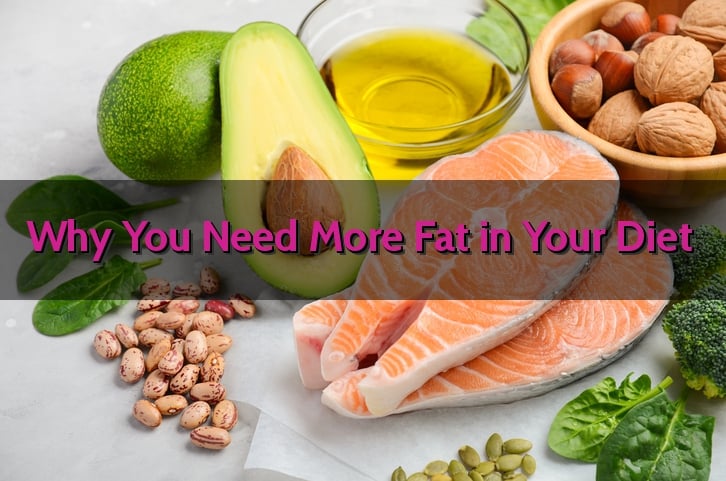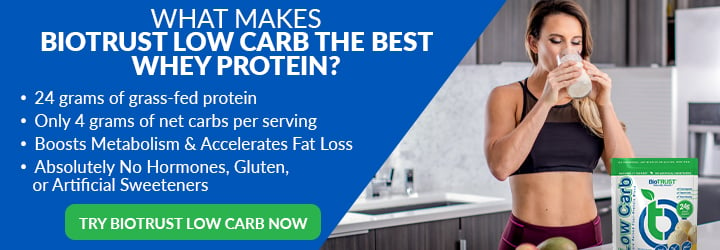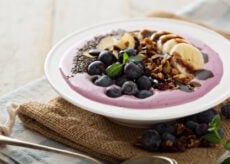Why You Need More Fat in Your Diet & Which Fats Are Best

On June 11, 1962, at his commencement address at Yale University, President John F. Kennedy said:
“The great enemy of truth is very often not the lie—deliberate, contrived, and dishonest—but the myth—persistent, persuasive, and unrealistic. Too often we hold fast to the clichés of our forebears. We subject all facts to a prefabricated set of interpretations. We enjoy the comfort of opinion without the discomfort of thought.”
Was he talking about the low-fat mantra that was taking the country by storm at the time? Obviously not, but the irony is that low fat was rapidly turning into an ideology—one that would permeate for decades.
And while many are now pointing the finger at other (perhaps undeserving) dietary scapegoats, many questions remain about fat. In fact, many people still have a fear of fat, despite the massive amount of scientific evidence to the contrary and the popularity of the Mediterranean, Paleo, and Ketogenic diets notwithstanding.
Why do you need more fat in your diet? What are the benefits of fat? Does eating fat make you fat? Is saturated fat good or bad for you? How much fat should you be eating? What foods should you be eating? Has fat been wrongly demonized? Let’s dive into these questions and more about FAT.
What are the Health Benefits of Fat?
Along with carbs and protein, dietary fats are the main sources of energy in our diets. In fact, that’s one of the benefits of fat: It’s a highly concentrated source of energy. In fact, with about 9 calories per gram, fat is the most energy-dense macronutrient, providing over two times more energy than carbs or protein.
In today’s world, you may be scratching your head as to why that’s a benefit. The fact of the matter is that food hasn’t always been (and still isn’t in some places) so plentiful and available, and the energy density of fat made it a very appealing nutrient evolutionarily. In fact, this may be why many of us are so drawn to the taste of fat (more on that in a moment).
Ready for another head-scratching benefit? Fat can be easily stored as body fat, which can provide energy when needed. How the heck is that a good thing? Agreed that most reading this don’t have a problem with too little body fat. And historically, people have restricted dietary fat intake in an effort to reduce body fat (which hasn’t worked out so well). Having said all that, body fat provides energy when the body requires it (such as during pregnancy, lactation, intense physical activity), it cushions and protects vital organs, and it helps insulate the body.
But dietary fats are much more than a source of energy. They function as structural building blocks of the body, carry fat-soluble vitamins, are involved in vital physiological processes, and are essential for a number of important biological functions, including growth and development.
Our cell membranes (walls that separate the inside from the outside of cells) are heavily influenced by the types of fats in our diets. These membranes control the movement of substances in and out of the cells. Both the length and saturation of dietary fats affect the arrangement of the membrane and its fluidity. For example, shorter chain and unsaturated fats are less stiff and less viscous, making the membranes more flexible.
Meanwhile, the human brain is made up of nearly 60% fat, and the essential omega-3 fat DHA is the predominant fatty acid found in the brain. DHA is also heavily concentrated in the retina of the eye, and it is present in all organs.
Dietary fat is essential for the delivery and absorption of the fat-soluble vitamins A, D, E, and K. In a study published in the Journal of Nutrition, researchers from Ohio State University found that when they added avocado or avocado oil to salsa, the absorption of carotenoids (e.g., lycopene, ß-carotene) was up to four times higher than when the salsa was avocado-free. If that’s not enough, when avocado was added to salads, the researchers found that absorption of these potent carotenoids was up to 15 times higher than when the salads were consumed avocado-free.1
As alluded to above, there are certain “essential” fats, which means our bodies need them yet cannot produce them. In other words, we have to get these fats—namely the omega-6 (LA) and omega-3 (ALA, DHA, and EPA)—from food and/or supplemental sources. For the most part, we get plenty of LA, which you can find in nuts and seeds. In fact, thanks to overconsumption of processed foods, most people consume a potentially unhealthy amount of LA. Most people, however, don’t consume enough omega-3 fats, particularly EPA and DHA, which are most prevalent in fatty fish, seafood, and algae.
These fats are essential because of the intricate role they play in several vital functions. For example, they’re converted to compounds with hormone-like or pro- or anti-inflammatory properties (such as prostaglandins or leukotrienes). Along those lines, they’re involved in many physiological processes, such as blood clotting, wound healing, and inflammation.

Another benefit is that dietary fat tends to increase satiety. This means it can be very effective at keeping you feeling full and satisfied (and delaying when you eat next). It’s important, though, to distinguish between satiety and satiation, which refers to the biological processes that are responsible for ending a meal. Along these lines, fat is less satiating than carbs or protein. This makes it easy to overeat dietary fat when you consider the following:
In addition to its functions in human nutrition and physiology, dietary fat plays a key role in the palatability and enjoyment of food. Simply put, fat can make foods and meals more pleasant by enhancing texture, flavor, mouthfeel, and aroma. Think about some of the characteristics of food that people enjoy most: creaminess and smoothness (e.g., cheese), tenderness and moisture (e.g., baked goods), and crispiness and crunchiness (e.g., baked and fried foods).
(There’s a reason why fat—usually poor quality—is added to processed foods and often paired with sugar and salt to maximize enjoyment.)
Generally speaking, the most palatable foods are those that are energy-dense and high in fat content. Evolutionarily, it seems natural that we’d be “wired” to seek these highly rewarding types of foods (which can increase levels of the “feel-good” chemical dopamine). However, in today’s society where most of us are incredibly fortunate to have 24-hour access to a seemingly endless supply of food, our preference toward “rewarding,” energy-dense, high-fat foods may lead to overeating.
What Are the Different Types of Fats
As alluded to above, there are different types of fats, and they can vary in length, or the number of carbon atoms they contain, and in the number of double bonds between them. For instance, butyric acid (C4), lauric acid (C12), oleic acid (C18), and arachidonic acid (C20) contain 4, 12, 18, or 20 carbon atoms, respectively. Most naturally occurring fats—both in the diet and in the body—contain 16 – 18 carbon atoms, and they are considered long-chain fatty acids.
Also, fats are classified according to the presence and number of double bonds in their carbon chain:
- Saturated fats contain no double bonds
- Monounsaturated fats contain one double bond
- Polyunsaturated fats contain more than one double bond
As mentioned above, both the length and saturation of the fats in the diet affect our cell membranes, and therefore, their fluidity. Shorter-chain fats and unsaturated fats are less stiff and less viscous, making the membranes healthier and more flexible. Essentially, understanding the basic chemistry of dietary fat helps us understand the role fats play in our health.
Note that we’re not going into industrial-produced trans fatty acids (i.e., partially hydrogenated oils). Simply put, these are not beneficial at any level. In fact, they are much like tobacco, and any level of intake increases the risk of negative health outcomes.
Wait, Does Eating Fat Make You Fat?
The short answer is a resounding NO. By no means, however, is it a “bad” question. And the fact that some people still fear fat makes it a really important one to address. But before we dismiss it, a little history lesson.
Believe it or not, the low-fat ideology has its roots in the early 20th century when women dieted in search of slimmer bodies to look better in more revealing, fashionable clothing of the 1920s. Women’s magazines regularly featured diet columns, diets, and recipes, and counting calories was the preferred approach. Educated dieters knew that fat had more than double the calories as carbs and protein, and low calorie, for all practical purposes, was low fat.
The low-fat ideology continued to spread in the 1940s, 50s, and 60s as observational studies seemed to show a correlation between diets high in fat—particularly saturated fat—and increased risk of heart disease (more on this below).
By the 1960s, the low-fat diet was being touted not just for heart health but as the “best” diet for the whole nation. And by 1980, the low-fat diet transcended to an ideology. The faith-inspiring and widely accepted notion that a low-fat diet was good for all Americans as it was promoted by physicians, the government, the food industry, and the popular health media.
However, according to Virginia Tech professor Ann La Berge, “Many Americans subscribed to the ideology of low fat, even though there was no clear evidence that it prevented heart disease or promoted weight loss. Ironically, in the same decades that the low-fat approach assumed ideological status, Americans in the aggregate were getting fatter, leading to what many called an obesity epidemic.”2
Since 1971, the average fat intake in the United States has decreased from 36.6% to 33.6%.3 This isn’t terribly surprising given the emphasis on low-fat diets, the emphasis placed on weight management, and the portrayal of dietary fat in the media over the last several decades. At the same time, we’ve seen a shocking, sharp rise in the prevalence of overweight and obesity—roughly 3 TIMES, depending on where you look.
It really can’t be put any more simply than said by renowned nutrition researchers Dr. Walter Willett and Dr. Rudy Leibel: “Dietary fat is not a major determinant of body fat.”4
Is Saturated Fat Good or Bad for You?
Don’t fear the fat! Got the message, loud and clear. But what about saturated fat, which has been demonized over the years? Isn’t it bad for you? Doesn’t saturated fat cause heart disease? After all, the research of Dr. Ancel Keys and others in the 1940s and 50s showed a strong correlation between diets high in saturated fats and increased risk of heart disease, which spawned the low-fat ideology and the “diet-heart hypothesis.” And remember from the brief biochemistry primer above that longer-chain saturated fats would lead to rigid, less fluid cell membranes, which is undesirable. In other words, the argument makes some sense.
Despite the compelling connections, the diet-heart hypothesis has come under great scrutiny of late and been largely dismissed.5 In other words, it’s now widely accepted that saturated fat is not associated with heart-related issues and other adverse health outcomes.6
But doesn’t saturated fat increase blood levels of cholesterol? Yes. But doesn’t elevated cholesterol increase the risk of heart disease? Well, that’s what the “lipid hypothesis” led us to believe. However, despite what we’ve been brainwashed to believe over the years, it’s not quite that simple. This theory has been called into question, picked apart, and largely discredited in recent years.7,8
Guess what else? Saturated fat is also more adept than mono- and polyunsaturated fats (which are often classified as “healthy”) at raising HDL cholesterol, which is typically classified as “good” cholesterol. Generally speaking, higher levels of HDL are associated with better heart health outcomes (i.e., lower cardiovascular disease risk).
Also, keep in mind that whole, minimally processed foods that contain saturated fat are also typically packaged with other types of fats (mono- and polyunsaturated), key nutrients (like protein), and essential micronutrients (i.e., vitamins and minerals). In other words, when you eat real food, there’s more to the story than saturated fat.
In addition, under the umbrella of saturated fat, there are several different fats (with different lengths/number of carbon atoms), including butyric (C4), hexanoic (C6), caprylic (C8), capric (C10), lauric (C12), palmitic (C16), and stearic (C18) acids. Don’t worry, there won’t be a quiz, but it’s important to recognize that these have different biological activities. For example, the C6 – C10 fats are known as medium-chain triglycerides, which appear to burn easily as energy, convert to ketones, boost metabolism, reduce appetite, and support healthy metabolic function.
How Much Fat Should I Eat?
Generally speaking, most people don’t need to eat more fat per se. Rather, they need to eat a higher quality of fat-containing foods. In other words, instead of the typical diet that’s rich in convenient, packaged, heavily processed foods, which tend to contain fats in the form of added refined vegetable oils and perhaps even hydrogenated trans fats, eating a diet rich in the whole foods mentioned below would be a tremendous step in the right direction for most people.
Said differently, the amount of fat may not be as important as the sources and types of fat you’re consuming. In other words, choice and quality matter.
According to most health organizations (including the World Health Organization, Institute of Medicine, and USDA), the recommended daily fat intake is in the range of 20 – 35% of total calories. In my experience, many people do well in 30 – 40% range, although some people do better toward the lower end of the spectrum (20% or so) while others prefer a much higher fat intake (≥70%), such as on a ketogenic diet.
In general, fat and carbohydrate consumption occur along a spectrum while protein intake is fairly stable (e.g., 0.75 – 1.0 grams per pound of bodyweight per day). As carbohydrate intake goes up, fat intake goes down, and vice versa, such as with a ketogenic diet.
The 30 – 40% range is consistent with the eating patterns associated with the Mediterranean and hunter-gatherer (i.e., Paleo) lifestyles, which emphasize eating REAL food, including both plant- and animal-based foods. Both the Mediterranean and Paleo ways of eating consistently rank highly for diet quality and health outcomes.9
What Are the Best Ways to Eat More Fat?
If you were to walk away with one thing from this entire article, my hope would be that it’s this: The types of foods you eat and your overall dietary pattern are far more important for overall health than how much fat you consume. Also, the types of fats—and again, the types of foods in which they are packaged—are arguably more important than the total amount of fat consumed in the diet.
For instance, even though saturated fat isn’t the devil it’s been made out to be, monounsaturated and polyunsaturated fats have important health benefits in the context of an overall healthy dietary pattern. Having said that, even under the umbrella of polyunsaturated fats, it’s critical to ensure you’re getting a healthy balance of essential omega-6 and omega-3 fats.
All that being said, virtually everyone would be well-advised to focus on replacing less healthy fats (such as refined vegetable oils like soybean, corn, canola, cottonseed, safflower, and sunflower) with healthier fats. In other words, eat less processed junk, and instead, focus on eating more REAL food.
In addition to providing healthy fats, whole, minimally processed foods also come packaged with various key nutrients (such as protein and fiber), vitamins, minerals, phytochemicals (which possess health-boosting antioxidant and anti-inflammatory properties), and other non-nutritive compounds. Here are some of the best plant- and animal-based sources of healthy fats:
- Fatty fish and seafood, namely wild salmon, Pacific sardines, mussels, rainbow trout, Atlantic mackerel, oysters, anchovies, and herring. These are going to be the best food sources of the essential omega-3 fats EPA and DHA, which are well-known to support heart health, brain health, and a healthy inflammatory response. They are also great sources of protein, and rich in a variety of micronutrients, including vitamin D and zinc.
- Tree nuts, including almonds, Brazil nuts, cashews, hazelnuts, macadamias, pecans, pine nuts, pistachios, and walnuts. In addition to mono- and polyunsaturated fats, tree nuts also contain fiber, vitamins, minerals, and a surprising number of phytochemicals, which have a variety of health-promoting properties, including antioxidant and anti-inflammatory effects.
- Eggs, particularly from pasture-raised hens. Eggs contain heart-healthy monounsaturated fats and essential omega-3s. They’re also a high-quality source of protein. And they’re loaded with vitamins (A, D, E, K, and several B vitamins), minerals (including calcium, iron, and zinc), and antioxidants (lutein and zeaxanthin). Just make sure you eat the WHOLE egg!
- Seeds, such as chia, flax, hemp, pumpkin, and sunflower. Like nuts, seeds generally provide a nice balance of unsaturated fats, which can help with the absorption of the phytonutrients they also package. They also contain key vitamins and minerals, including magnesium.
- Fruits, especially avocados, coconut (which is also classified as a tree nut), and olives. Avocados and olives are notorious for being great sources of the heart-healthy monounsaturated fat oleic acid. Meanwhile, coconut is lauded for its high concentration of lauric acid, which has antimicrobial properties and also helps raise levels of HDL cholesterol. Each of these fruits is also loaded with antioxidants.
- Dairy products, which encompasses a wide variety of foods including butter, cheese, milk, and yogurt. Although the evidence is not definitive, recent research suggests that dairy, especially full-fat dairy, is related to less belly fat and better markers of cardiometabolic health, including blood pressure, cholesterol, triglycerides, and glycemic control. Believe it or not, researchers believe these better health outcomes may actually be brought on, at least in part, by the fat components (e.g., saturated fats, milk fat globule membranes).10 Dairy also contains B vitamins, potassium, iodine, and zinc.
- Meat, wild game, pork, and poultry (ideally, organic, pasture-raised, sustainable, hormone- and antibiotic-free, etc., where applicable), which provide a healthy balance of fats when raised under appropriate conditions. They are also dense sources of protein and various micronutrients.
Special Offer:Get MetaboGreens up to 20% OFF (very limited inventory)
What about oils? Are oils considered one of the good fats you need more of? Good question. Believe it or not, most people would probably be best off reducing the amount of fat they add during cooking. Instead, focus on consuming the majority of fat through the whole foods mentioned above. Having said that, the following would be the best oils to use (for cooking, salad dressings, etc.):
- Extra-virgin olive oil
- Extra-virgin avocado oil
- Extra-virgin macadamia oil
- Extra-virgin coconut oil
- Butter and ghee from grass-fed cows
Why You Need to Eat More Fat: Take-Home Points
- Although intentions were good and it seemed to make sense at the time, the low-fat ideology was wrong and led to even more problems.
- Dietary fat is essential, and it serves a number of key functions. It’s a dense source of energy. Dietary fats function as structural building blocks of the body, carry fat-soluble vitamins, are involved in vital physiological processes, and are essential for a number of important biological functions, including growth and development.
- Dietary fats can vary in length and number of double bonds, factors which affect their role and function in the human body.
- Dietary fat is not a determinant of body fat. In other words, fat doesn’t make you fat.
- Saturated fat has been wrongly vilified. There are various fats under the umbrella of saturated fat. Foods containing saturated fat may also provide other types of fat and nutrients.
- The most important points:
- The types of foods you eat and your overall dietary pattern are far more important for overall health than how much fat you consume.
- Eat less processed junk. Instead, focus on eating more REAL food.
There you have it, the skinny on why you need to eat more fat. There’s obviously a LOT here to digest, so if you have any questions, comments, or feedback, fire away in the comments below. We look forward to hearing from you!








